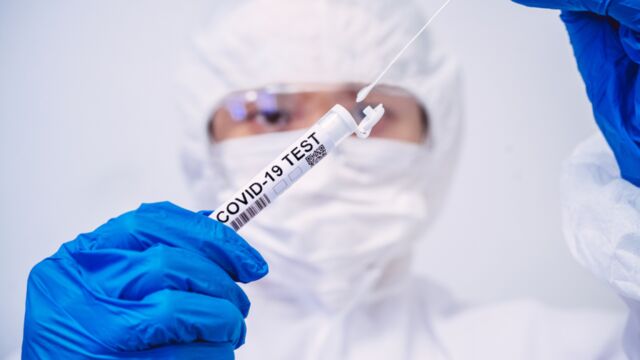A new strain has been running rampant across the UK in recent months, after being proven to be more infectious than regular COVID. But what are the symptoms?
Discover our latest podcast
What are the symptoms of the new COVID strain?
The UK strain of coronavirus, also known as VUI 202012/01 and B.1.1.7 included a mutation to the virus’ protein spike that makes it more infectious than regular COVID. This new strain actually has the same symptoms as regular coronavirus, but there are a few differences between the two.
ONS recently conducted a survey where they asked a number of people who tested positive for the coronavirus between the 15th of November and the 16th of January, to describe the symptoms they had experienced.
The ONS data showed that much like regular coronavirus, common symptoms of the new strain include cough, sore throat, muscle and joint pain (myalgia and arthralgia) and fatigue. However, people who have been infected with the new strain are much less likely to experience a loss of taste and smell. Otherwise, from the survey, those who tested positive for the new strain showed an increase of symptoms throughout their infection overall.
Three signs you may have already had the new strain
Long COVID is a term that describes the ongoing effects of coronavirus after the infection itself has gone away. According to the Centers for Disease Control and Prevention, the following three symptoms are the most commonly associated with Long COVID:
1. Dyspnea
This symptom otherwise known as a shortness of breath is a common sign of Long Covid. Small studies have been conducted which show that lung findings such as fibrosis or lung scarring, can be the cause of this.
2. Arthralgia
Arthralgia, otherwise known as joint pain also occurs commonly among those who are experiencing Long COVID as well as pneumonia, fatigue and headaches. A study in Lancet revealed:
Arthralgia is one of the symptoms that occurs in patients with COVID-19, and is present in 14.9 percent of cases.
3. Myalgia
Myalgia refers to the muscle pain that many may experience during Long COVID and is often accompanied by other symptoms. This muscle pain is caused by the body’s inflammatory response to the virus, which in turn signals the immune system to start. Myalgia occurs when this process causes the abnormal breakdown of the body’s muscular tissue.
So, if you have had any of these three symptoms then you may have already had the new strain of coronavirus. Doctors have advised that you don’t need to isolate if you’re having symptoms of Long Covid. However, if you’re experiencing any new symptoms, such as a cough, fever or any other symptoms that can be associated with both the new or the regular strain of COVID, then it may be best to self isolate and get yourself tested.















